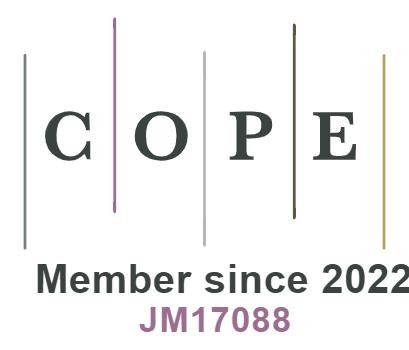REFERENCES
1. Ding G, Wu Q, Zhang L, Lin Y, Tsiftsis TA, Yao YD. An amateur drone surveillance system based on the cognitive internet of things. IEEE Commun Mag 2018;56:29-35.
2. Huang Y, Zhu X, Wu Q. Intelligent spectrum anti-jamming with cognitive software-defined architecture. IEEE Syst J 2023;17:2686-97.
3. Pan J, Ye N, Yu H, et al. AI-driven blind signature classification for IoT connectivity: a deep learning approach. IEEE Trans Wireless Commun 2022;21:6033-47.
4. Liu J, Yu J, Niyato D, Zhang R, Gao X, An J. Covert ambient backscatter communications with multi-antenna tag. IEEE Trans Wireless Commun 2023;22:6199-212.
5. Höyhtyä M, Mämmelä A, Eskola M, et al. Spectrum occupancy measurements: a survey and use of interference maps. IEEE Commun Surv Tutorials 2016;18:2386-414.
6. Phillips C, Ton M, Sicker D, Grunwald D. Practical radio environment mapping with geostatistics. In: 2012 IEEE International Symposium on Dynamic Spectrum Access Networks; 2012. pp. 422-33.
7. Yilmaz HB, Tugcu T, Alagöz F, Bayhan S. Radio environment map as enabler for practical cognitive radio networks. IEEE Commun Mag 2013;51:162-9.
8. Du XF, Zhu QM, Wu QH, et al. UAV-assisted spectrum mapping system based on tensor completion scheme. In: MLICOM 2020: Machine Learning and Intelligent Communications; 2021. pp. 16-26.
9. Zhu Q, Zhao Y, Huang Y, et al. DEMO abstract: an UAV-based 3D spectrum real-time mapping system. In: IEEE INFOCOM 2022 - IEEE Conference on Computer Communications Workshops (INFOCOM WKSHPS); 2022. pp. 1-2.
10. Agrawal N, Bansal A, Singh K, Li CP, Mumtaz S. Finite block length analysis of RIS-assisted UAV-based multiuser IoT communication system with non-linear EH. IEEE Trans Commun 2022;70:3542-57.
11. Üreten S, Yongaçoğlu A, Petriu E. A comparison of interference cartography generation techniques in cognitive radio networks. In: 2012 IEEE International Conference on Communications (ICC); 2012. pp. 1879-83.
12. Denkovski D, Atanasovski V, Gavrilovska L, Riihijärvi J, Mähönen P. Reliability of a radio environment Map: Case of spatial interpolation techniques. In: 2012 7th International ICST Conference on Cognitive Radio Oriented Wireless Networks and Communications (CROWNCOM); 2012. pp. 248-53.
13. Tang M, Ding G, Wu Q, Xue Z, Tsiftsis TA. A joint tensor completion and prediction scheme for multi-dimensional spectrum map construction. IEEE Access 2016;4:8044-52.
14. Hashimoto R, Suto K. SICNN: spatial interpolation with convolutional neural networks for radio environment mapping. In: 2020 International Conference on Artificial Intelligence in Information and Communication (ICAIIC); 2020. pp. 167-70.
15. Yilmaz HB, Tugcu T. Location estimation-based radio environment map construction in fading channels. Wireless Commun Mob Comput 2015;15:561-70.
16. Alfattani S, Yongacoglu A. Indirect methods for constructing radio environment map. In: 2018 IEEE Canadian Conference on Electrical & Computer Engineering (CCECE); 2018. pp. 1-5.
17. Wang J, Zhu Q, Lin Z, et al. Sparse bayesian learning-based 3-D radio environment map construction-sampling optimization, scenario-dependent dictionary construction and sparse recovery. IEEE Trans Cogn Commun Netw 2023;10:80-93.
18. Zhao Y, Zhu Q, Lin Z, et al. Temporal prediction for spectrum environment maps with moving radiation sources. IET Commun 2023;17:538-48.
19. Liu K, Lin Z, Liu Y, Zhu Q, Wu Q, Cai X. A new spectrum map fusing method based on difference group sparsity. In: 2023 IEEE/CIC International Conference on Communications in China (ICCC); 2023. pp. 1-6.
20. Zhang H, Tian Q, Han Y. Multi channel spectrum prediction algorithm based on GCN and LSTM. In: 2022 IEEE 96th Vehicular Technology Conference (VTC2022-Fall); 2022. pp. 1-5.
21. Zhang H, Peng S, Zhang J, Lin Y. Big data analysis and prediction of electromagnetic spectrum resources: a graph approach. Sustainability 2022;15:508.
22. Li S, Sun Y, Zhang H, Wang M, Zhang Z. MTF2N: multi-channel temporal-frequency fusion network for spectrum prediction. In: GLOBECOM 2022 - 2022 IEEE Global Communications Conference; 2022. pp. 4703-9.
23. Cai X, Lin Z, Peng Y, et al. A new variational bayesian-based radiation source positioning method with multistage parameter modification. In: 2023 IEEE/CIC International Conference on Communications in China (ICCC); 2023. pp. 1-6.
24. Trinh-Hoang M, Viberg M, Pesavento M. Partial relaxation approach: an eigenvalue-based DOA estimator framework. IEEE Trans Signal Proc 2018;66:6190-203.
25. Zhang Y, Wang M, Tan Z, et al. Design of wireless sensor network location algorithm based on TDOA. In: 2019 IEEE 3rd Information Technology, Networking, Electronic and Automation Control Conference (ITNEC); 2019. pp. 70-75.
26. Liu B, Zhu X, Jiang Y, Wei Z, Huang Y. UAV and piecewise convex approximation assisted localization with unknown path loss exponents. IEEE Trans Veh Technol 2019;68:12396-400.
27. Min E, Guo X, Liu Q, Zhang G, Cui J, Long J. A survey of clustering with deep learning: from the perspective of network architecture. IEEE Access 2018;6:39501-14.
29. Umer M, Kulik L, Tanin E. Spatial interpolation in wireless sensor networks: localized algorithms for variogram modeling and Kriging. Geoinformatica 2010;14:101-34.
31. Sun B, Guo Y, Li N, Fang D. Multiple target counting and localization using variational bayesian EM algorithm in wireless sensor networks. IEEE Trans Commun 2017;65:2985-98.
32. Lu J, Zha S, Huang J, Liu PG, Chen G, Xu S. The iterative completion method of the spectrum map based on the difference of measurement values. In: 2018 IEEE 3rd International Conference on Signal and Image Processing (ICSIP). IEEE; 2018. pp. 255-59.
33. Tropp JA, Gilbert AC. Signal recovery from random measurements via orthogonal matching pursuit. IEEE Trans Infor Theory 2007;53:4655-66.
34. Chi Y, Pezeshki A, Scharf L, Calderbank R. Sensitivity to basis mismatch in compressed sensing. In: 2010 IEEE International Conference on Acoustics, Speech, and Signal Processing; 2010. pp. 3930-33.







